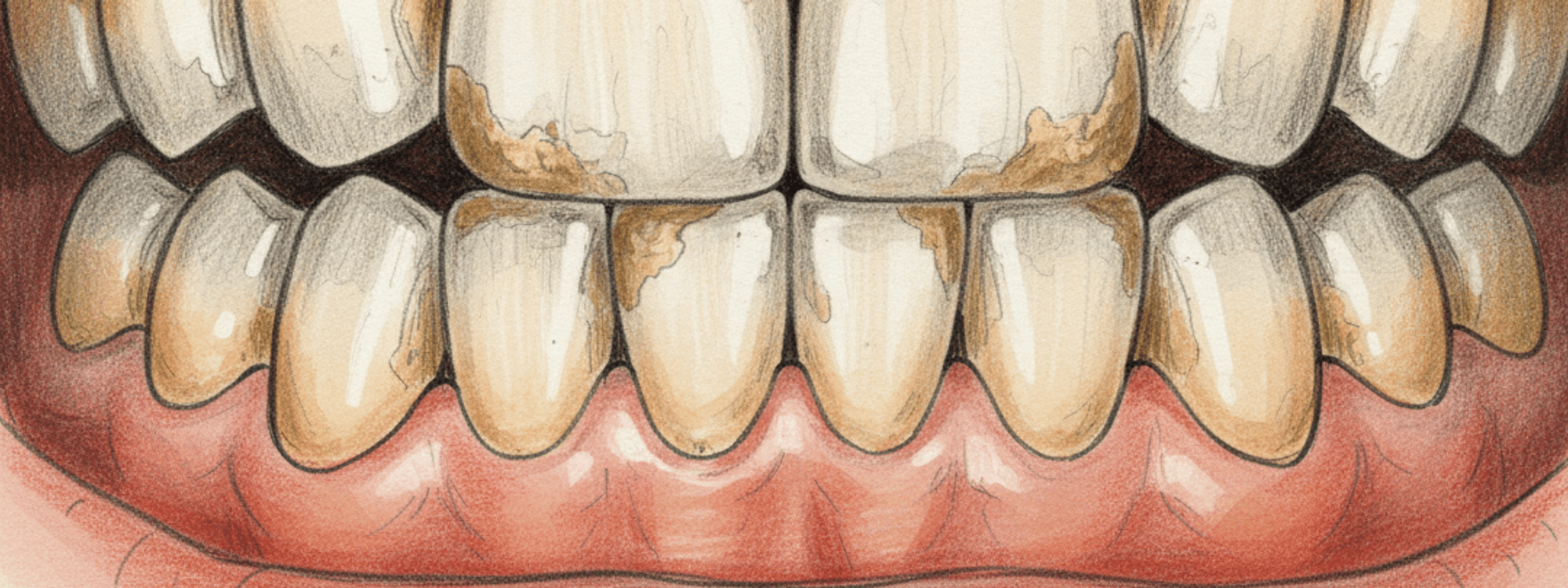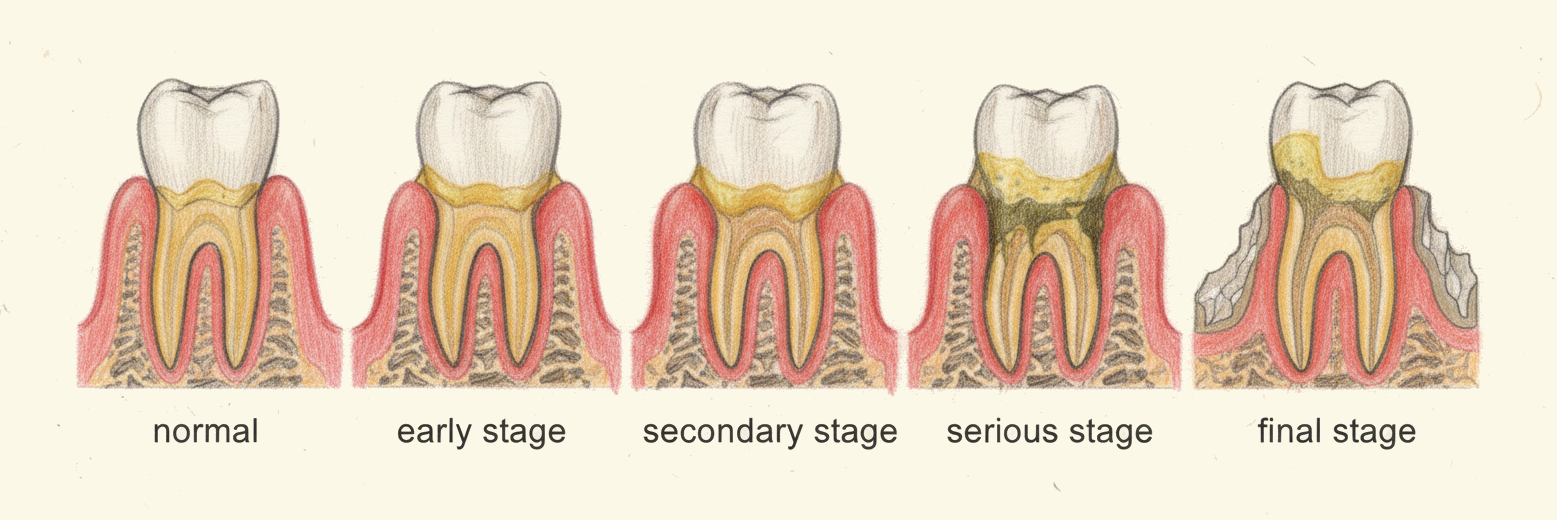
Tartar, also known as dental calculus, is a common dental concern. It is a hardened form of plaque, a sticky substance that forms on teeth due to the combination of saliva, food particles, and bacteria. Tartar is more challenging to remove than plaque and requires professional dental intervention. We will talk about the nature of tartar, how it forms, and ways to prevent its formation.
Tartar is a mineral deposit that forms around the tooth. It bonds strongly to the tooth enamel and cannot be removed with regular brushing or flossing. Tartar can vary in color, from yellow to white to dark gray, depending on the substances it comes into contact with. For instance, tobacco smoke can darken tartar, causing both aesthetic and health concerns.
There are two types of tartar: supragingival tartar that forms on the external surface of the teeth, and subgingival tartar that forms beneath the gumline and in periodontal pockets. The latter is particularly harmful as it is associated with dental diseases such as periodontitis, a severe gum infection that damages soft tissue and destroys the bone that supports your teeth.
When we consume food, remnants can remain in the oral cavity, providing a breeding ground for bacteria. A colorless film, known as plaque, forms on the surface of the teeth due to the combination of bacteria and food residues. If this plaque is not removed within 12-18 hours, it calcifies, forming tartar deposits. The plaque combines with the calcium and phosphates in saliva to create a hard and adhesive concretion. The chemical composition and pH of saliva are significant factors that predispose an individual to tartar formation.

Tartar deposits are often found near the salivary glands, specifically on the outer surface of the upper molars and the inner surface of the lower incisors.
Periodontal pockets are alterations of the normal gingival sulcus, the small space between the teeth and gums. When bacteria settle in plaque or tartar, they produce toxins that inflame the gum tissue. The gum reacts by swelling and detaching from the tooth, increasing the gingival sulcus and forming a periodontal pocket. This pocket becomes a breeding ground for various types of bacteria, leading to severe damage to the tooth's support structures. Symptoms such as increased tooth mobility, gingival bleeding, and pain may occur initially, with tooth loss being a potential outcome in the later stages.
Preventing tartar formation is crucial to maintaining good oral health and avoiding potential aesthetic, economic, and psychological damage resulting from premature tooth loss. The hygiene rules to follow are similar to those recommended for all other dental and gum pathologies. These include:
Tartar removal, or scaling, is a professional dental procedure. It can be performed manually or using an ultrasonic scaler. This process is often followed by teeth polishing to further reduce the risk of gum inflammation. The frequency of undergoing tartar removal depends on the individual's tartar formation rate, but it is generally recommended every 6-18 months.
In conclusion, understanding tartar and its implications is vital for maintaining good oral health. Regular oral hygiene practices and professional dental check-ups are key to preventing tartar formation and ensuring a healthy and confident smile.